The 5 Prettiest Bed Ideas to Steal Right Now
The fastest way to give a "blah" bedroom new life? Change your linens—and borrow a technique or two from these designers.
By Candace Braun Davison
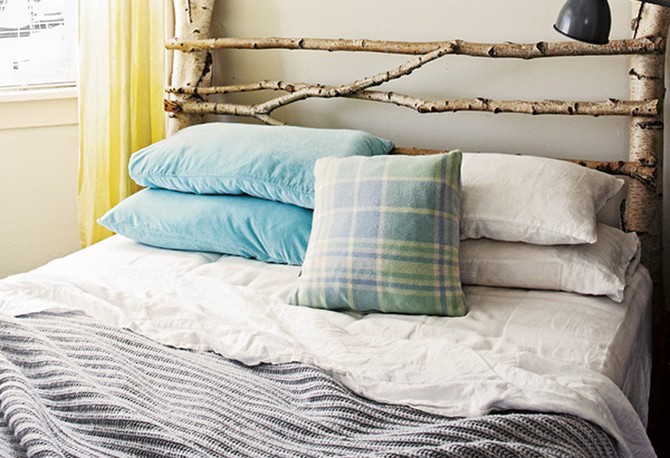
Photo: James Geer/A Place Called Home
The Snugglier Alternative to Your Old Duvet
We're referring to one aspect of the rustic design movement that has made its way to the bedroom: knit blankets—larger than the usual living-room throws, typically in earthy, neutral tones and made using natural fibers. Interior designer and A Place Called Home author Jason Grant says that recently, he's been finding more people than usual drawn to handmade styles that appear softer and more inviting-to-the-touch than sateen and polyester-blend fabrics.
Grant recommends trying an oversize knit—where you can easily wriggle your fingers between each stitch—like the chunky wool designs found at Little Dandelion.
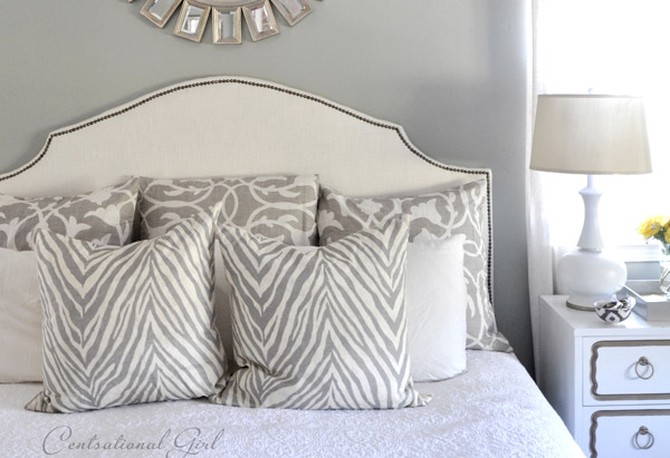
Photo: Kate Riley/CentsationalGirl.com
The Coveted Headboard That's All Over Pinterest
Upholstered headboards continue to dominate home-décor blogs and shelter magazines—adored for the tailored, refined look they lend to even the most basic beds—but what many people don't realize is that they're not so difficult to make, says Kate Riley, the blogger behind Centsational Girl. The build-your-own-nailhead-trim headboard tutorial on her site is one of her most popular projects, probably because it takes just a few hours to build and costs only $70 in materials—a steal compared to the $450 version seen in stores. Riley recommends upholstering the headboard with a neutral color like gray, since it will likely outlive multiple bedspreads.
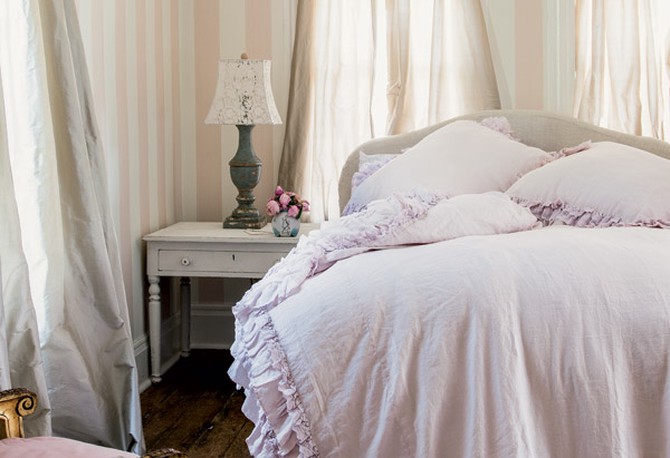
Photo: Amy Neunsinger/Rachel Ashwell Couture Prairie
The "Mush" Factor Every Romantic Bed Needs
Rachel Ashwell, the designer behind Shabby Chic and author of Rachel Ashwell Couture Prairie, says the key to effortless, romantic style all comes down to the "mush" factor: that plush quality that makes it seem as if the bed is meant to be lounged in all day long. Sure, a fluffy duvet helps to achieve this goal, but if you love your traditional comforter, or if we've convinced you to go for a knit blanket, Ashwell recommends buying a feather bed. Adding that pillowy feather-bed layer helps create that plump, lavish look you see in magazines and catalogs—and can also make your bed feel just as gorgeous as it appears.
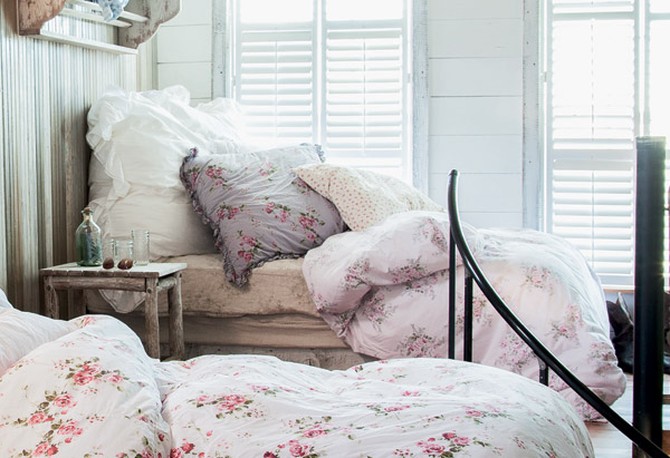
Photo: Amy Neunsinger/Rachel Ashwell Couture Prairie
The "Bigger Is Better" Pillow Setup
Multiple small, decorative pillows can create a sense of visual clutter, making the room seem more jumbled than it actually is. That's why designer Rachel Ashwell recommends using fewer pillows, and going for larger sizes. Try trading in your Euro pillows (which are typically 26x26 inches) for a pair of 30-inch squares, she says, for a simple way to create a huge impact at the head of the bed. Or try an extra-large rectangle, like a body pillow, to span the width of the headboard. It can be used on its own or with two standard pillows in front of it. The best part? This option makes it easy to pull the bed together even when you don't have time to execute perfect military corners.
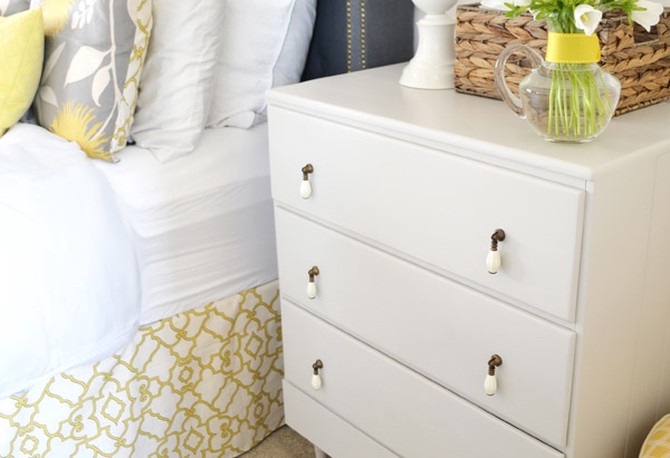
Photo: Sarah Dorsey
The Finishing Touch That Does All the Talking
If you're drawn to more subdued, neutral bedding, you can liven things up with a more daring bed skirt, like this one designer Sarah M. Dorsey created. Just add 3 yards of fabric to an existing dust ruffle; if you attach it using no-sew tape, you don't even need a needle and thread.
What makes a striking bed skirt really work, though, is choosing a similar color scheme or pattern for the pillow shams—or in the lampshades—to draw your eyes up. Otherwise, your gaze focuses on the floor, making the bed seem lower and dinkier, as if you just downed an Alice-in-Wonderland-esque "Drink Me" potion.
Next: 7 easy ways to refresh your bedroom
Published 11/20/2013

